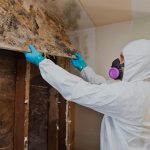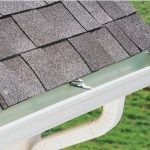
Image Credit: https://www.istockphoto.com/photo/removing-materials-containing-some-asbestos-gm179312755-5094874
Buying a home is a huge investment which requires significant decisions and calculations. To safeguard your investment, you need to ensure that you are investing in the right and healthy property.
What is Asbestos?
Asbestos is a natural fibrous mineral found inside the earth. It consists of fibres that are tiny and invisible to your naked eye. During 1940s to 1970s time period, asbestos was the widely used building material due to its high strength and excellent insulation. It was also relatively inexpensive and suitable for all residential and commercial building projects.
So, you must be aware of the potential asbestos risks and how to address any asbestos related issues before buying a home. This will ensure the safety and health of your family. You may hire asbestos collection services to detect asbestos in your home, which will provide more bargaining power to you.
Where can you find asbestos in your home?
There are six types of asbestos, which are chrysotile, amosite, crocidolite, anthophyllite, tremolite, and actinolite. Out of these, chrysotile and amosite are the two most likely asbestos found in homes.
Some of the common places in your home where you can usually find asbestos include –
- Insulating pipes and ducts
- Insulations around the furnaces or fireplaces
- Corrugated flooring
- Roof shingles
- Wall paints
- Ceiling tiles
- Guttering
- Panelling
Why is asbestos considered dangerous for your health?
Studies found that asbestos pose minimum health risks if they are left undisturbed and undamaged. In case a damaged asbestos structure in your home is disturbed unwittingly, it releases the asbestos fibres into the air and makes it airborne to cause serious health risks. Inhaling asbestos fibres can damage your lungs and parts of your chest.

Image Credit: https://www.istockphoto.com/photo/asbestos-gm92238282-7176388
Asbestos fibres can also cause various severe diseases like asbestosis, pleural disease, lung cancer, and mesothelioma which are linked to your lungs and chest. Hence, living in a house or working in an environment where there are possibilities of asbestos airborne is considered as unhealthy and dangerous.
What you need to know about asbestos testing options?
During late 1990s, the use of asbestos in the construction of buildings became illegal in the U.K. but some buildings constructed before 2000s may still contain asbestos. If you are looking to buy an old home, you must carry an asbestos testing and survey. It may incur additional survey cost to you as legally it is not mandatory to carry the survey in residential or domestic property.
If you know the testing options available for asbestos, you can spend to find asbestos in your dream home which can help you to protect your loved ones living inside it. The cost of testing and survey for asbestos depends on your local or state regulations. It is advised to carry asbestos surveys mandatorily to avoid the risk of asbestos exposure, which may cause serious diseases over time.
In case of multi-occupancy or non-domestic premises, it is the duty of the landlords or the caretaker or the in-charge of the building to manage the asbestos. It is a legal requirement under Regulation 4 of the Control of Asbestos Regulations 2012. If asbestos is present, they must put a management plan to identify the location and manage the asbestos. The cost of the asbestos surveys and related management works are to be charged to the owners of the flats through service charges.
The survey must be carried out by a licensed expert who can safely handle and dispose the asbestos in licenced asbestos disposal site. You can obtain details of the location and surveyors from the Local Authority. You must ask your real estate agent about the presence of asbestos in the homes you are considering to purchase.
If the asbestos is not damaged or is handled by a professional, you should not have to worry about the dangers associated with asbestos exposure.









